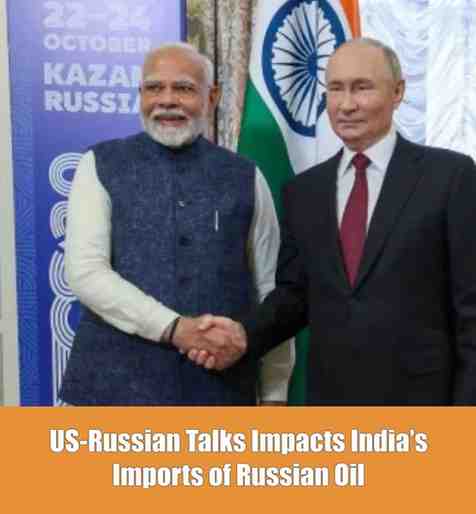
At the end of the US-Russia summit in Alaska in 2025 there was no ceasefire for Ukraine. However, US President Donald Trump took no rapid follow-up on sanctions or concrete outcome while Russian President Vladimir Putin came out politically stronger. The debates caught the international attention particularly from India, strongly interested in the issues in question of energy security and trade alike, in view of the lasting US trade embargo to Russian oil imports in question.
India’s Energy Dilemma: US Tariffs and the Russia-Ukraine War’s Influence
Introduction
The 2022 Russia-Ukraine war has reformed energy markets and political alliances across the world. Even as Western countries such as the U.S. and Germany slapped heavy sanctions against Russia, India had taken a more pragmatic view, utilising cheaper Russian crude to help satisfy energy needs. But its decision has come under fire from the US which introduced secondary tariffs on Indian goods in the hope of encouraging New Delhi to cut its dependence on Russian oil. With the geopolitical tug-of-war escalating, India is balancing its strategic relations with U.S. even as it looks for cheaper supplies of energy.
India’s Increasing Reliance on Russian Oil
Russia had been providing less than 2% of India’s crude oil imports before the war. But Russia, hit by Western sanctions that upended traditional trade routes, began to offer deep discounts on its oil, giving the Russian grade an edge with Indian refiners. Russia, by 2025, had turned into India's largest crude supplier, supplying it every year with 35-40% of the crude it bought.
This realignment has had some majorly confidence-boosting fruits for India :
Lower fuel costs- which will also help control inflation.
Lower import bill- which will be a gain on trade balance.
Energy security- lessening reliance on unpredictable Middle Eastern suppliers.
But India’s burgeoning energy relationship with Russia has also led to friction with the US.
US & India Response: *Secondary* Tariffs on Goods
In response, the US placed 25% reciprocal duty on some Indian exports in early 2025. The move aims to:
- Discourage India from purchasing Russian oil and factor in sanctions from the West.
- Limit Moscow’s revenue from energy sales.
- Press New Delhi to diversify its sources of energy.
India’s Reaction
The Indian government has accused the tariffs of being " unjustified ", claiming that:
- Russian oil is not directly sanctioned , but the G7 has imposed a price cap.
- India’s shopping is in accordance with international trade law .
- The US promoted stable energy markets after the war. At the end of the barrier, Indian refiners keep buying Russian crude because: it is commercially viable, and it does not come under any written political directive!
The Alaska Summit: No Breakthrough on Sanctions
A recent US-Russia summit in Alaska yielded no deal on sanctions relief or a Ukraine peace agreement. The former US president Donald Trump , who met with Kim three times, suggested tougher sanctions if the discussions fail.
Month: Current Affairs - August 18, 2025
Category: current affairs daily